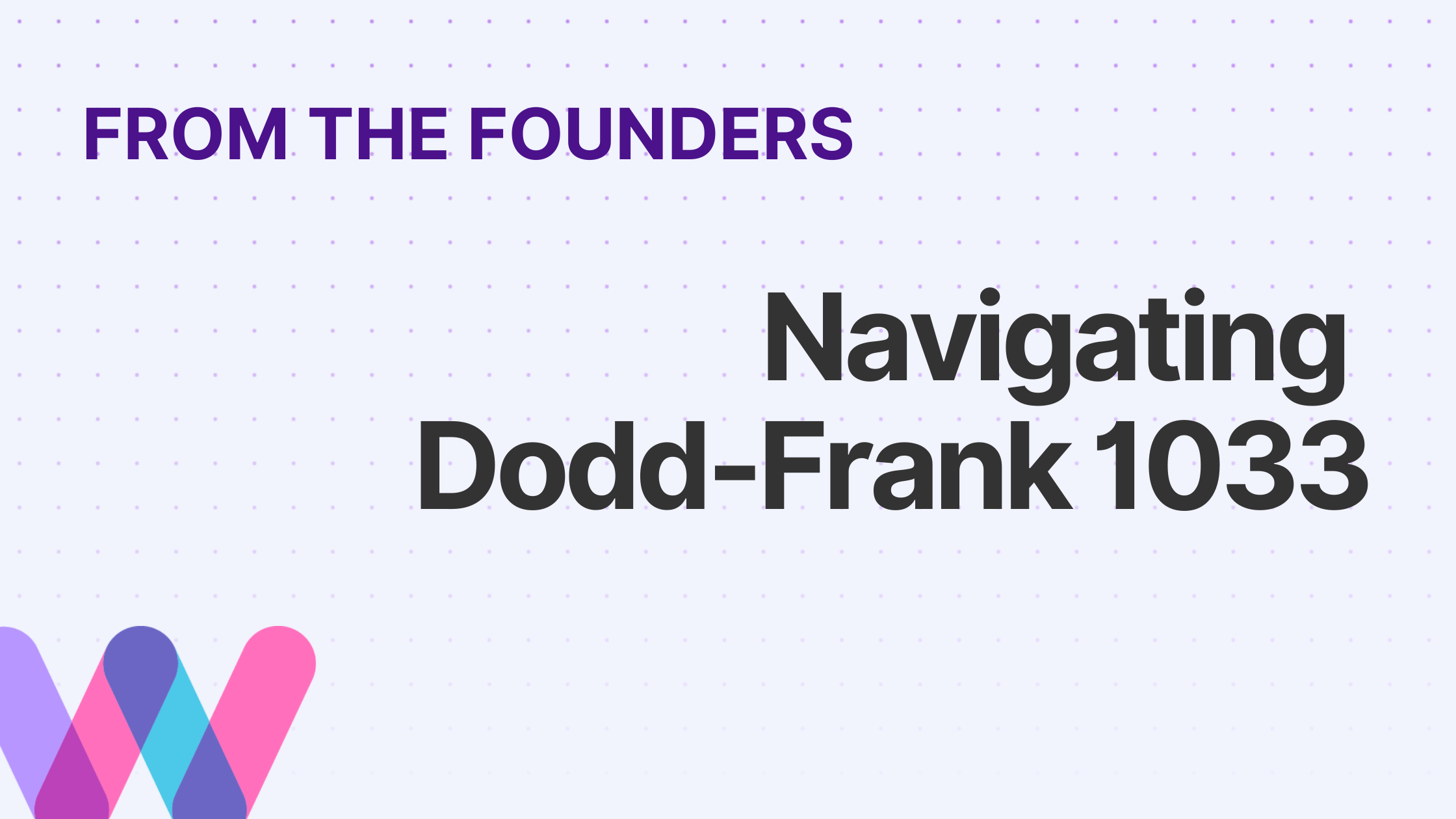This article was originally published on Forbes through the Young Entrepreneur Council (YEC), where Sal Rehmetullah shares insights as a member.
The financial industry is in the midst of a data revolution, and small businesses stand to benefit in a big way. With the Consumer Financial Protection Bureau’s (CFPB) 1033 Rule, financial institutions are now required to grant consumers and businesses greater access to their financial data upon request—ushering in a new era of transparency, innovation and (let’s be honest) a bit of scrambling for compliance.
For banks, fintechs and financial service providers, this is not just another regulation to check off the list—it’s a massive shift in how financial data is shared and controlled. Those who adapt quickly won’t just comply; they’ll thrive in a more competitive, customer-centric world.
So, what exactly should financial institutions be doing to stay ahead of 1033? Here’s a practical game plan.
1. Build Secure and Standardized Data Access
At the heart of 1033 is the idea that customers should be able to access and share their financial data easily and securely. That means financial institutions need to develop standardized APIs (Application Programming Interfaces) that facilitate safe data sharing—not just for compliance but to stay competitive.
How to Get Started:
- Adopt secure API frameworks like those promoted by the Financial Data Exchange (FDX).
- Partner with trusted fintechs that specialize in data access and protection.
- Ensure your data-sharing methods meet robust security and privacy standards.
2. Make Data Portability a Priority
1033 isn’t just about access—it’s about portability. Small businesses should be able to seamlessly transfer their financial data between institutions, making switching banks or integrating with new financial platforms easier than ever.
How to Get Started:
- Invest in user-friendly dashboards that allow customers to manage their data access.
- Work with data aggregators that streamline the portability process while maintaining compliance.
- Educate customers on how they can leverage their data for better financial opportunities.
3. Strengthen Consumer Consent and Data Governance
With greater data access comes greater responsibility. Financial institutions must implement clear, user-friendly consent mechanisms to ensure that small businesses (and all customers) are fully in control of who has access to their data and for what purpose.
How to Get Started:
- Develop transparent, easy-to-read consent agreements (ditch the legal jargon).
- Use identity verification tools to prevent fraud and unauthorized data sharing.
- Regularly audit who has access to customer data and ensure compliance with data governance best practices.
4. Leverage AI-Powered Tools to Make Data Work for Customers
While 1033 ensures small businesses can access their financial data, most don’t have time to analyze spreadsheets of transaction history. Financial institutions should go beyond compliance and use AI-driven analytics to turn raw data into actionable insights that help small businesses make better financial decisions.
How to Get Started:
- Deploy data analytics tools that provide businesses with real-time financial insights.
- Partner with platforms like Worth AI, which specialize in helping small businesses understand their financial health and borrowing potential.(Full Transparency I am the CEO)
- Offer customized financial products based on a business’s unique data trends.
5. Future-Proof Compliance by Staying Agile
Regulations evolve, and 1033 is just the beginning of open banking in the U.S. Financial institutions that remain flexible and proactive—rather than waiting for new compliance deadlines—will be in a much stronger position.
How to Get Started:
- Designate an open banking task force within your institution.
- Stay engaged with industry groups and regulatory updates to anticipate future changes.
- Continuously iterate on your data-sharing policies and technologies to stay ahead of the curve.
Final Thoughts: More Than Compliance—A Competitive Edge
1033 isn’t just about checking a regulatory box—it’s a massive opportunity to strengthen relationships with small businesses, build trust, and offer better financial services. Institutions that embrace this shift with secure, user-friendly, and insightful data-sharing strategies will gain a competitive edge in the evolving financial landscape.
The key is to move beyond compliance and create real value for small businesses. Because in the end, those who make life easier for their customers are the ones who win.
Read more from Sal’s Forbes YEC blog here.
Related posts
Access additional resources and insights to support your goals and drive success.
BLOG: Insights from Money20/20: What’s Shaping the Future of Financial Innovation
That’s a wrap on Money20/20 2025! Worth showed up focused, energized, and ready to shape the future of financial innovation.…
Customer Success at Worth: Building Partnerships that Last
At Worth, Customer Success is the bridge between our customers and our mission to simplify underwriting and onboarding for financial…
eSign Multi-Template: Simplify, Standardize, and Scale Your Onboarding
What exactly is eSign Multi-Template? To understand it, you have to first understand merchant onboarding. Onboarding new clients or businesses…




